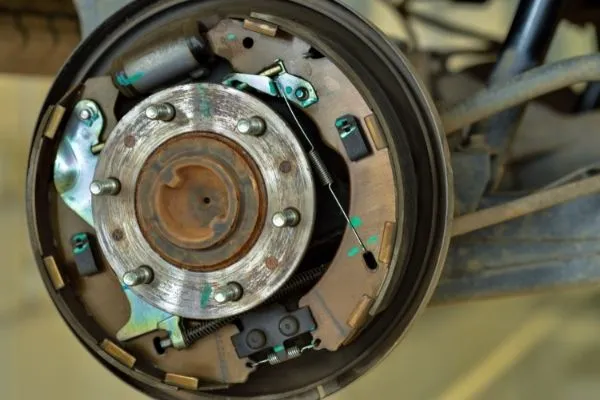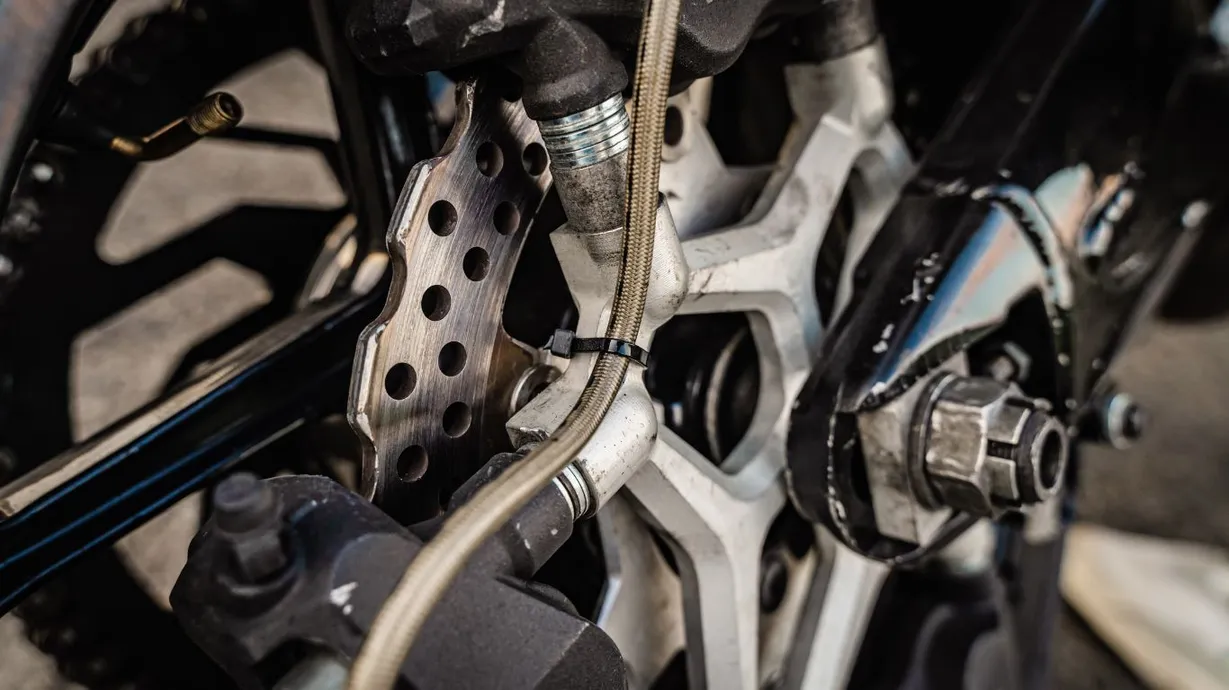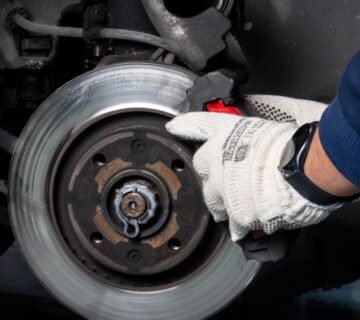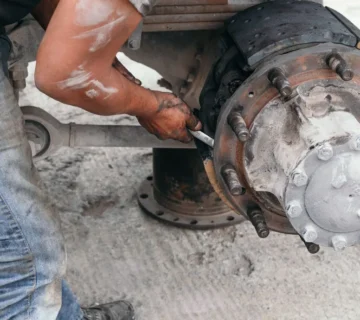As a vehicle owner, understanding your brake system is crucial for maintaining safety on the road. At the heart of this system lies the brake master cylinder, a component that plays a vital role in your car’s ability to stop efficiently. This article will provide you with comprehensive knowledge about the brake master cylinder, its function, and its importance in your vehicle’s braking system. By familiarizing yourself with this critical component, you’ll be better equipped to recognize potential issues, perform necessary maintenance, and ensure your brakes are always operating at peak performance. Let’s delve into the world of brake master cylinders and empower you with the information you need for safer driving.
Understanding the Brake Master Cylinder: Function and Importance
The brake master cylinder is the heart of your vehicle’s braking system, playing a crucial role in ensuring safe and efficient braking. This component is responsible for converting the mechanical force of your foot pressing the brake pedal into hydraulic pressure that activates the brake calipers or wheel cylinders.
How the Brake Master Cylinder Works
When you step on the brake pedal, it pushes a piston inside the master cylinder. This action forces brake fluid through the brake lines to the wheel cylinders or calipers, which then apply pressure to the brake pads or shoes. The result is the slowing or stopping of your vehicle.
Importance in Brake System Maintenance
Regular brake system maintenance is essential for optimal performance, and the brake master cylinder is a key component to monitor. A faulty brake master cylinder can lead to decreased braking efficiency, increased stopping distances, and potentially dangerous situations on the road.
Symptoms of a Faulty Brake Master Cylinder
Be aware of these warning signs:
- Spongy or soft brake pedal
- Brake warning light illumination
- Contaminated brake fluid
- Uneven brake pad wear
If you notice any of these symptoms, it’s crucial to have your vehicle inspected by a professional. Timely brake master cylinder repair can prevent more serious issues and ensure your safety on the road.
Common Symptoms of a Faulty Brake Master Cylinder
Recognizing the signs of a failing brake master cylinder is essential for maintaining safe and efficient braking. Here are some key indicators that your vehicle’s braking system might need attention:
Spongy or Soft Brake Pedal
One of the most common signs of a failing brake master cylinder is a soft or spongy brake pedal. If you notice that the pedal feels less firm or sinks to the floor when pressed, it could signal an issue with the hydraulic pressure in your braking system.
Inconsistent Braking Performance
A malfunctioning brake master cylinder can cause inconsistent braking. You may notice your vehicle pulling to one side or requiring more force to stop. These irregularities indicate that your braking system needs attention.
Visible Fluid Leaks
Inspect the area around your brake master cylinder and the driver’s side floorboard for any signs of brake fluid leaks. Puddles or wet spots can indicate a failing seal within the master cylinder, compromising its ability to maintain proper hydraulic pressure.
Warning Light Activation
Modern vehicles are equipped with brake warning lights on the dashboard. If you see this light illuminate, it could signify various issues, including problems with the brake master cylinder. Don’t ignore this warning – have your brake system checked promptly.
Understanding how brake master cylinders work and recognizing these symptoms can help you identify when brake master cylinder repair is necessary, ensuring your vehicle’s braking system remains in top condition.
Brake Master Cylinder Repair: When and How to Replace It
The brake master cylinder is a critical component of your vehicle’s braking system. Knowing when and how to repair or replace it is essential for maintaining safe and efficient braking performance.
Signs Your Brake Master Cylinder Needs Attention
Be alert for these symptoms of a faulty brake master cylinder:
- Spongy or soft brake pedal
- Brake warning light illumination
- Visible brake fluid leaks
- Uneven braking or pulling to one side
If you notice any of these issues, it’s crucial to have your brake system inspected by a professional immediately.
DIY Brake Master Cylinder Repair vs. Professional Service
While some car enthusiasts may attempt brake master cylinder repair themselves, it’s generally recommended to leave this task to certified mechanics. The complexity of the brake system and the critical nature of its function make professional service the safest choice.
However, if you’re experienced with automotive repairs, here are the basic steps for replacing a brake master cylinder:
- Disconnect the battery
- Remove brake fluid and disconnect brake lines
- Unbolt and remove the old master cylinder
- Install the new master cylinder and reconnect brake lines
- Bleed the brake system to remove air
- Test thoroughly before driving
Remember, proper brake system maintenance is crucial for your safety on the road. If you’re unsure about how brake master cylinders work or the repair process, always consult a professional mechanic.
Maintaining a Healthy Brake System: Brake Master Cylinder Inspection and Maintenance
Regular inspection and maintenance of your brake master cylinder are crucial for ensuring safe and efficient braking. By understanding how the brake master cylinder works and recognizing symptoms of a faulty brake master cylinder, you can prevent potential brake system failures and costly repairs.
Visual Inspection
Start by visually inspecting the brake master cylinder for any signs of leakage or damage. Look for wet spots or fluid stains around the cylinder and brake lines. Check the brake fluid level in the reservoir, ensuring it’s between the “MIN” and “MAX” lines. Low fluid levels may indicate a leak or worn brake pads.
Brake System Maintenance
Proper brake system maintenance includes regular brake fluid changes. Over time, brake fluid absorbs moisture, which can lead to corrosion and reduced braking efficiency. Flush and replace the brake fluid according to your vehicle manufacturer’s recommendations, typically every 2-3 years.
Testing Brake Performance
To assess your brake master cylinder’s performance, conduct a simple test:
- Start the engine and press the brake pedal firmly.
- Hold the pedal down for about 30 seconds.
- If the pedal sinks or feels spongy, it may indicate a problem with the brake master cylinder or brake system.
Professional Brake Master Cylinder Repair

If you notice any issues during your inspection or testing, it’s crucial to seek professional brake master cylinder repair. A certified mechanic can diagnose the problem and perform necessary repairs or replacements to ensure your braking system functions optimally.
Ensuring Safe and Efficient Braking: The Role of the Brake Master Cylinder
The brake master cylinder is the heart of your vehicle’s braking system, playing a crucial role in ensuring safe and efficient braking. Understanding how the brake master cylinder works and maintaining it properly are essential for every driver.
How Brake Master Cylinder Works
When you press the brake pedal, the brake master cylinder converts the mechanical force into hydraulic pressure. This pressure is then transmitted to the brake calipers or wheel cylinders, causing the brake pads to clamp down on the rotors or drums. This process enables your vehicle to slow down or come to a stop. A properly functioning brake master cylinder is essential for the effectiveness of your braking system, ensuring the vehicle’s ability to stop safely when needed.
Symptoms of Faulty Brake Master Cylinder
Recognizing the signs of a failing brake master cylinder is crucial for your safety. Some common symptoms include:
- Spongy or soft brake pedal
- Brake warning light illumination
- Contaminated brake fluid
- Uneven braking performance
If you notice any of these signs, it’s essential to have your vehicle inspected by a professional immediately.
Brake Master Cylinder Repair and Maintenance
Regular brake system maintenance is key to prolonging the life of your brake master cylinder. This includes:
- Checking brake fluid levels regularly
- Replacing brake fluid as recommended by the manufacturer
- Inspecting brake lines for leaks or damage
In some cases, brake master cylinder repair may be necessary. However, if the damage is extensive, a complete replacement might be the safer option.
Conclusion
As you may know, the brake master cylinder plays a vital role in your vehicle’s braking system. It’s important to understand its function, how to maintain it, and what issues to watch for in order to keep your vehicle’s brakes functioning properly. Regular inspections, checking fluid levels, and addressing any potential problems promptly are all crucial steps in maintaining the cylinder’s performance. By staying proactive with your maintenance, you ensure your vehicle’s braking system remains reliable and safe. Remember, a well-maintained brake master cylinder is essential for your safety on the road, helping to prevent brake failure and keeping you secure behind the wheel.




